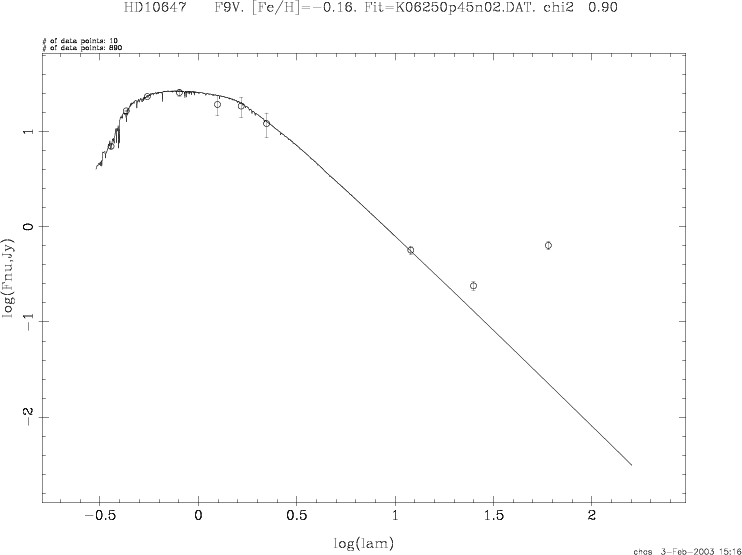
Principal: J. Stansberry
Deputy: K. Stapelfeldt, Need IST deputy...
Data Monkey(s):
Priority: 2
Downlink Priority: Normal
Analysis Time: 48 Hours
Last Updated:
Acquire normal photometry AOT observations at 24, 70, and 160um of an available, moderately bright, circumstellar disk with < 2' spatial extent. Use at least 3 cycles in each band regardless of whether that is needed to get the desired S/N in order to verify correct behavior of the observatory and pipeline for multiple cycles, and examine S/N as a function of integration time to verify the predicted sensitivity.
The source chosen is the F9V star HD 10647, an IRAS source with excess emission at 25 and 60 microns. This source was in the VLS GTO program, but Chas/Beth agreed to let us do it for IOC, as the IOC observation actually gave better S/N than the one they had planned. The 25 and 60 micron fluxes are roughly 250mJy and 630mJy, respectively.
The Photometry companion to this task is mips-275, which uses the same target. The flux calibration of SED mode observations is a meta-task (2030).
This observation is an Early Characterization Observation.
The existing data for this source are summarized in the following
figure, which compares photometric measurements to a Kurucz model
fit to those data (from Beth Holmes)
3 cycles of the photometry AOT in all 3 bands using 3 second DCEs.
AOR is available here.
Array Data Desired:
All Arrays.
Data Reformatting Option:
Special Instructions:
Results posted as example of the quality of the photometry observers can expect from the
Phot/SR AOT.
Failure Modes and Responses
Additional Notes